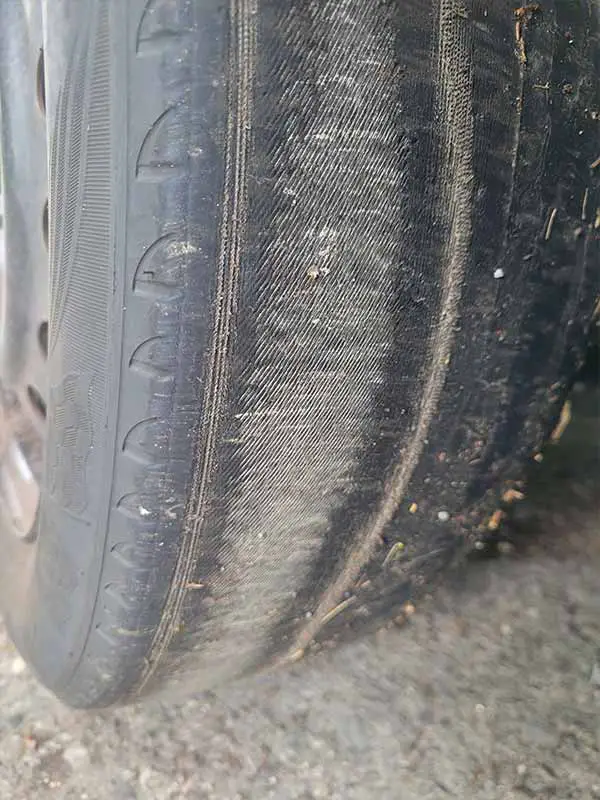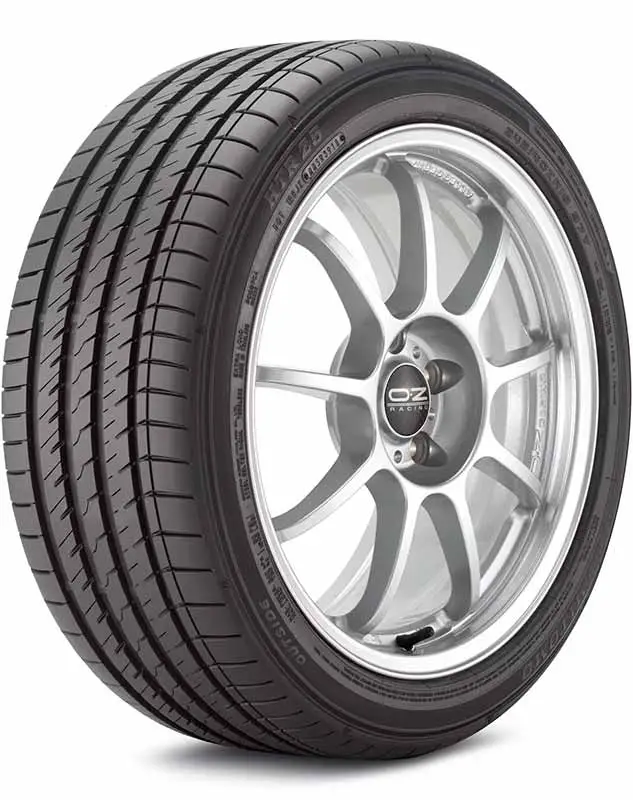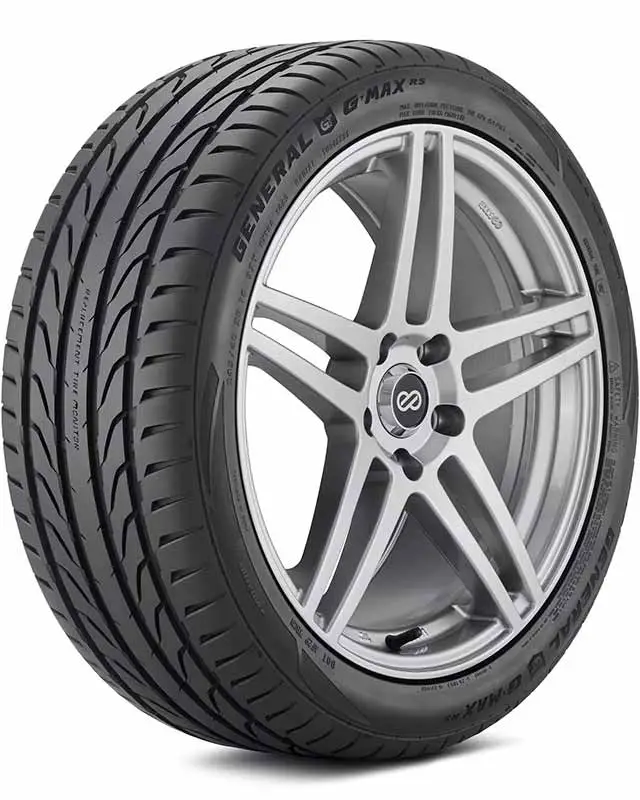Have you just noticed white threads showing on your tires? Or maybe there are metal wires sticking out of one of your tires?
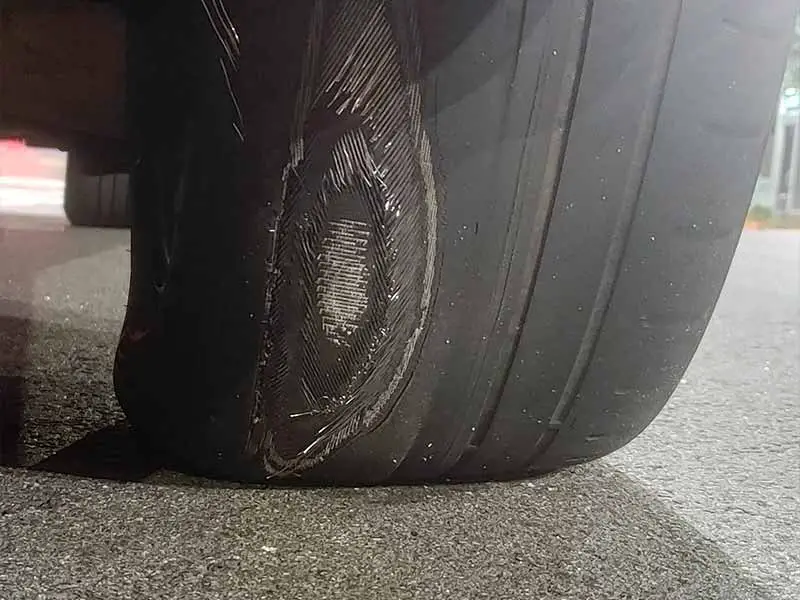
Driving on tires with wire showing or cords visible is very dangerous. In fact, you’ve already worn beyond simply bald tires which in and of themselves are dangerous and you’ll experience all of those downsides.
If you have wires or cords showing on the tires of your car or truck you should go to your nearest tire shop immediately and have your tires replaced.
Tire cords are part of the internal structure of your tires. If these are visible you are at risk of a tire blowout and likely have very little tread left to safely drive on wet road surfaces.
Cords Showing On Tires
Cords showing on tires is a sign you need a tire replacement and that you may have incorrect tire pressure or an alignment problem that has caused this damage.
Not regularly checking your tire tread can allow uneven wear problems to go unnoticed and drastically shorten tire life.
If you’re wondering how long will tires last with cords showing, you’re asking the wrong question. You should be asking yourself how to prevent this from happening again.
Tires are expensive but continuing to drive with cords showing on tires is extremely dangerous for many reasons.
Let’s take a closer look.
What Are Cords And Steel Wires In Tires?
Radial tires, which are the vast majority of tires used on passenger cars and trucks, use layers of cords and steel belts to provide structure and strength to a tire.
The first layers of a tire structure to become exposed from wear or damage are the crown plies, cap plies, and steel belts. These layers lay underneath the tire tread and sidewalls and are normally protected by a significant amount of rubber.
What Causes Wires Or Cords To Show On Tires?
There is a significant amount of rubber on new tires that make up the tread pattern. Tires should be replaced once the tread depth has reached 2/32″.
Not Monitoring Tread Wear
If you don’t monitor the tread depth on your vehicle, you could end up continuing to drive on tires that are far beyond the point of needing to be replaced. If this happens, you could end up wearing them down until there are structural wires and cords showing.
Road Hazards
It is also possible for potholes, curb strikes, and road debris to cause damage to your tires that can expose synthetic and steel cords on sidewalls and tread surfaces.
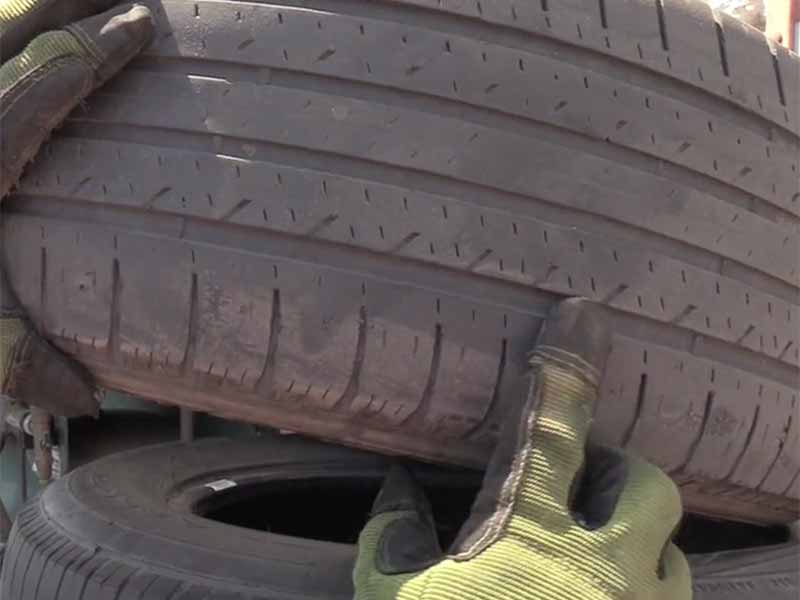
Uneven Tread Wear
Uneven tire wear patterns are the most common reason for uneven tread wear. Uneven wear is usually caused by incorrect tire pressure or poor wheel alignment.
Tire pressure often isn’t monitored properly. Drivers usually rely on their tire pressure monitoring system (TPMS) to alert them when they need to add air pressure. Unfortunately, TPMS usually only alerts when 25% tire pressure has been lost.
This means that many passenger vehicle owners drive around with inadequate tire pressure which leads to uneven tread wear on the sidewall edges of your tires.
Wheel alignment is also a common cause of premature tire wear due to uneven wear patterns. Wheel alignment should be performed every 10,000 miles to prevent poor alignment which can lead to toe wear and camber wear as well as poor handling.
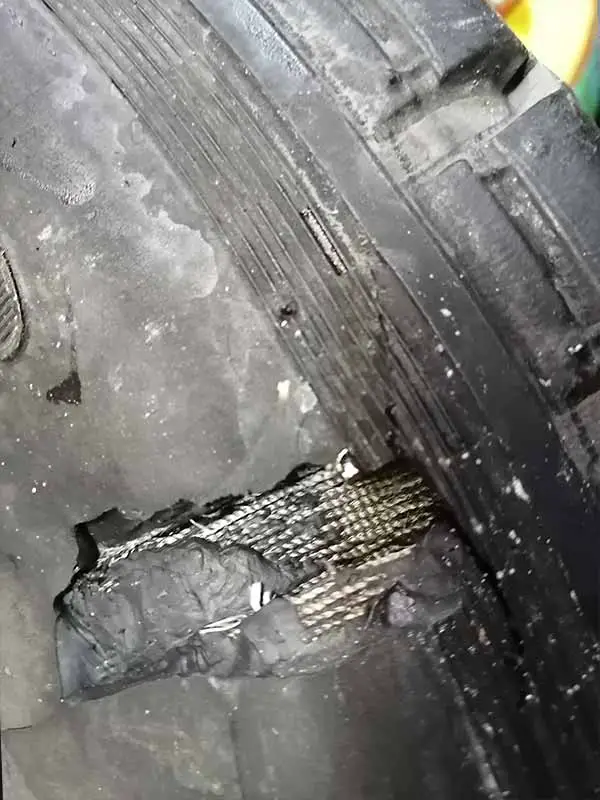
How Long Can You Drive On Tires With Cords Or Wire Showing?
You shouldn’t drive on tires that you can see wires or cords sticking out of or visible in any way. You have a tire that has very little material left between the pressurized air inside the tire and the contact patch.
If you can see cords or wires showing on your tires it means that they have been damaged or worn to the point that they have had the deepest portions of the tire structure exposed and they can have a catastrophic blowout very easily.
Whether because of tire wear or damage from road hazards, driving on tires with cords showing can fail at any moment. Doing so will put stress on the area of exposed cords due to a large amount of heat buildup and forces that radial tires must withstand.
Is It Safe To Drive On Tires With Cords Or Wires Showing?
It is extremely unsafe to drive on tires with cords or wires showing. The potential for the tire to blow out with this type of damage is extremely high. If the tire fails due to a blowout while driving it would be very difficult to control at speed and likely lead to a serious accident.
Tires handle a lot of force and stress just sitting still and holdup up the weight of your car or truck. The forces and stresses they must handle increase dramatically when you begin driving, even at slow speeds.
Cornering forces and braking stretch and twist tires. If cords are showing on your tires then the layers that hold your tire together have been damaged and the chance of causing more damage to these already damaged and worn tires is extremely likely.
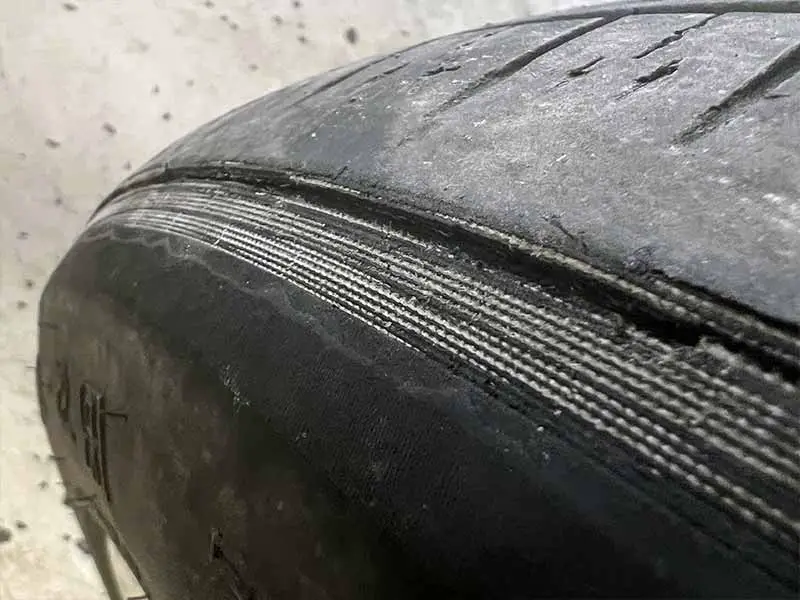
How To Fix A Tire With Wire Showing
It is not possible to fix wires or cords showing on tires. The only solution at this point is to replace your tires immediately for your safety and the safety of others on the road.
Bald Tires Meaning
The term “bald tires” typically means any tire that has 2/32″ of tread depth or less remaining. Once tires reach this point of tread wear they can no longer adequately channel water out and away from underneath the contact patch.
Worn tires with excessive tire wear have a much greater chance of hydroplaning and stopping distances when emergency braking on wet road surfaces will be much longer. Tires with 2/32″ of remaining tire wear or less can have stopping distances more than double that of new tires on wet roads.
How Long Can You Drive On A Bald Tire?
You should never drive on bald tires. Tires with 2/32″ of tire wear are considered illegal for use on public roads in most states.
A bald tire is a ticking time bomb. Worn-out tires can lose air pressure suddenly due to a blowout very easily due to the lack of protection of penetration from tire treads.
A bald tire can also be unsafe if you experience a sudden rainstorm. Worn-out tires can not properly channel water out from under your tires. This leads to a much greater chance of hydroplaning and braking distance when panic stopping to be as much as twice the distance of a new tire.
Is It Safe To Drive On Bald Tires?
Bald tires are extremely unsafe for use on wet or dry roads. Tire professionals recommend replacing tires once they’ve reached 4/32″ of tread remaining.
Bald tires can cause you to lose control of your vehicle in wet weather conditions. 4/32″ will allow your tire’s remaining tread grooves enough tread depth to properly channel water out and away from underneath the contact patch of your tires.
Bald tires can also lead to a catastrophic blowout since the majority of the tire’s tread has worn away and there is very little rubber preventing foreign objects from penetrating through the tire and causing it to rapidly lose air pressure.
How To Fix Bald Tires
While 18-wheelers often use retread tires. This is when a bald tire has a new layer of tire tread and rubber added to restore the tread pattern and essentially turn worn tires into fresh tires. Unfortunately, there are no such tires for passenger cars and trucks.
Bald tires can’t be fixed and must be replaced once they have worn to 2/32″ but it is recommended they be replaced at 4/32″ for your safety.
How To Prevent Cords Showing On Tires
Proper tire maintenance will help you get the most life out of your tires and ensure your tread wears as evenly as possible.
Let’s discuss the best practices for tire maintenance.
Regularly Check Air Pressure
The NHTSA recommends you check the pressure in your tires every month. You can find the proper air pressures for your vehicle on the tire information sticker in the driver’s door jamb.
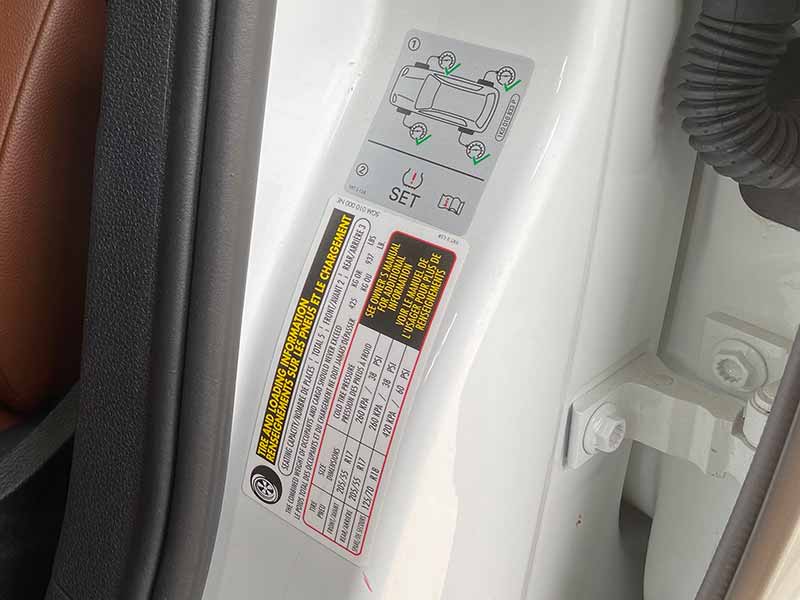
Regularly Check Tread Depth
You should at least visually inspect your tire tread monthly to ensure that they haven’t worn down to the wear bars. You can also use the penny test to check your tires.
Rotate Your Tires Every 5,000 Miles
It’s important to rotate your tires every 5,000 miles to keep them wearing as evenly as possible. Each tire position around your vehicle will wear differently.
Rotating your tires will ensure that the unique wear patterns of each position are spread across each tire to get the most life out of them possible.
Perform A Wheel Alignment Every 10,000 Miles
Alignment problems are a common source of uneven tread wear. Curb strikes and potholes can knock your alignment out of the manufacturer’s specification over time.
Also, suspension component wear and tear can cause the alignment to fall out of spec. Control arm bushings and ball joints are common suspension components that wear out and need replacement.
Rebalance Your Tires Every 10,000 Miles
Tires can become unbalanced as they wear down. Curb strikes and potholes can bend wheels and cause wheel weights to fall off.
Unbalanced wheel and tire assemblies can lead to cupping wear and shorten the life of your tires.
Safe Tire Tread Depth
The minimum legal tread depth for most states is 2/32″, however, you should consider replacing your tires at 4/32″ to maintain a safer amount of stopping distance on wet roads and reduce the chance of hydroplaning.
Resources
Below are some links you may find helpful when learning about tires
Final Thoughts
Proper tire maintenance such as ensuring correct tire pressure, regular rotation, and wheel alignment will help you get the most life out of your tires. It will also help you spot uneven tire wear problems before they become dangerous.
It’s also wise to learn how to read wear bars or use the penny test to know tread levels before your tires go bald.
No one wants to find themselves in a situation where they have cords showing on tires. This is extremely dangerous and you should have these tires replaced immediately.
Good luck and happy motoring.
